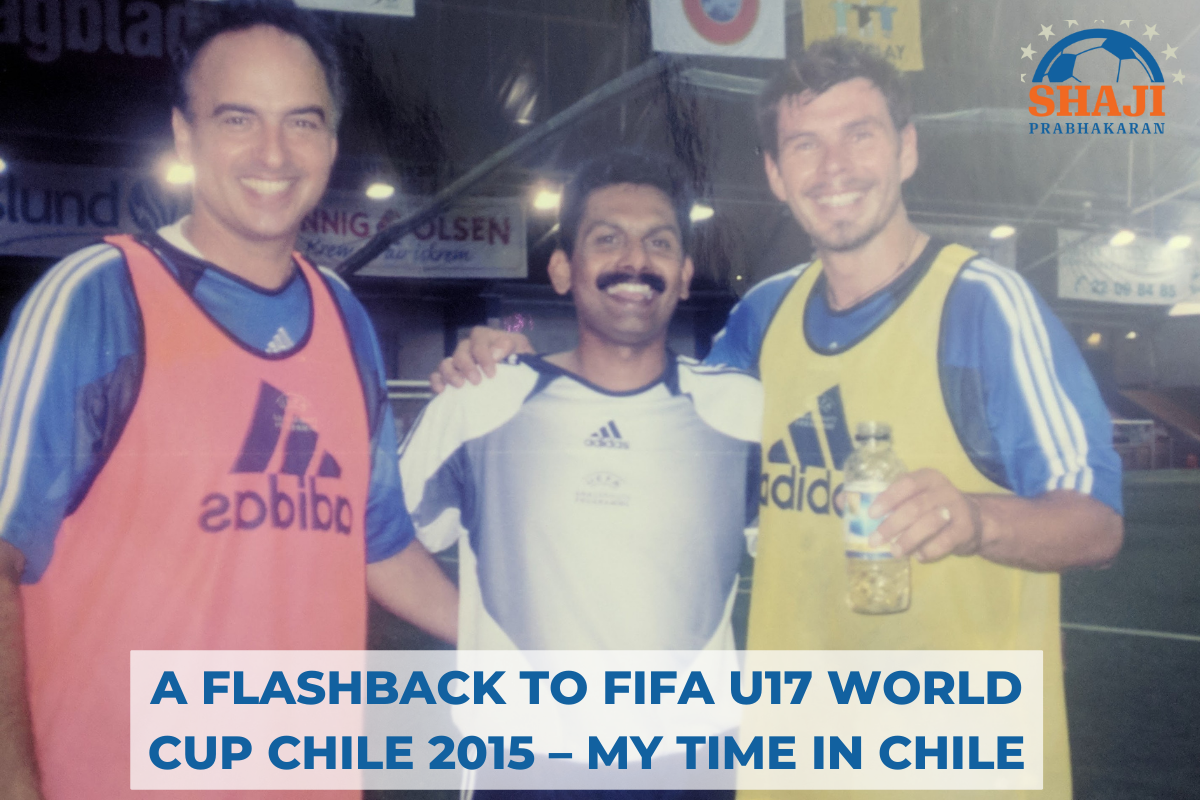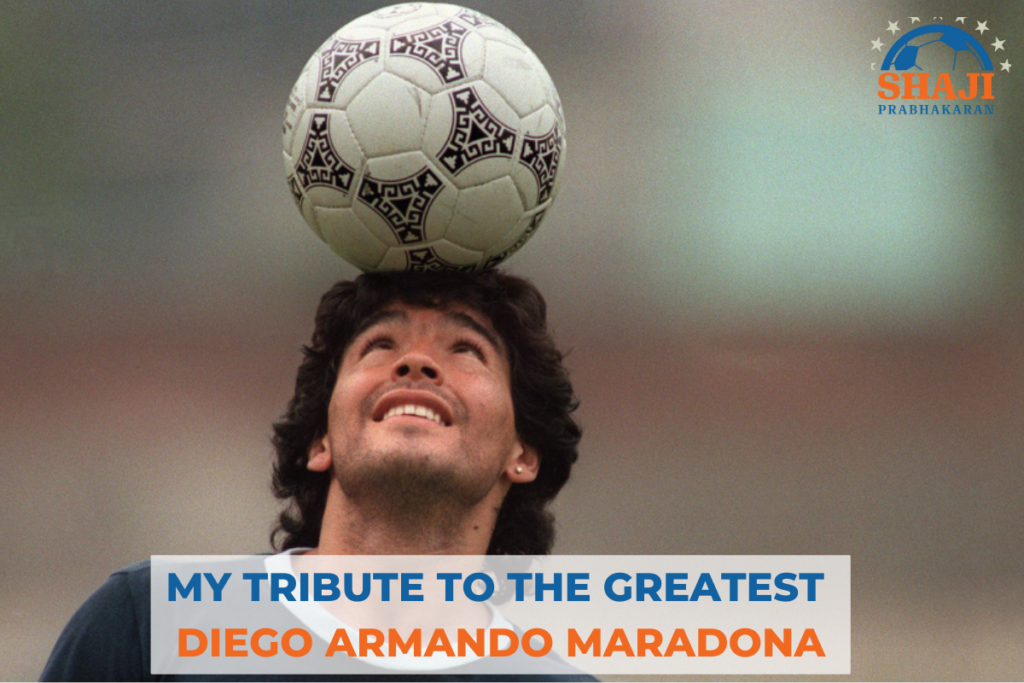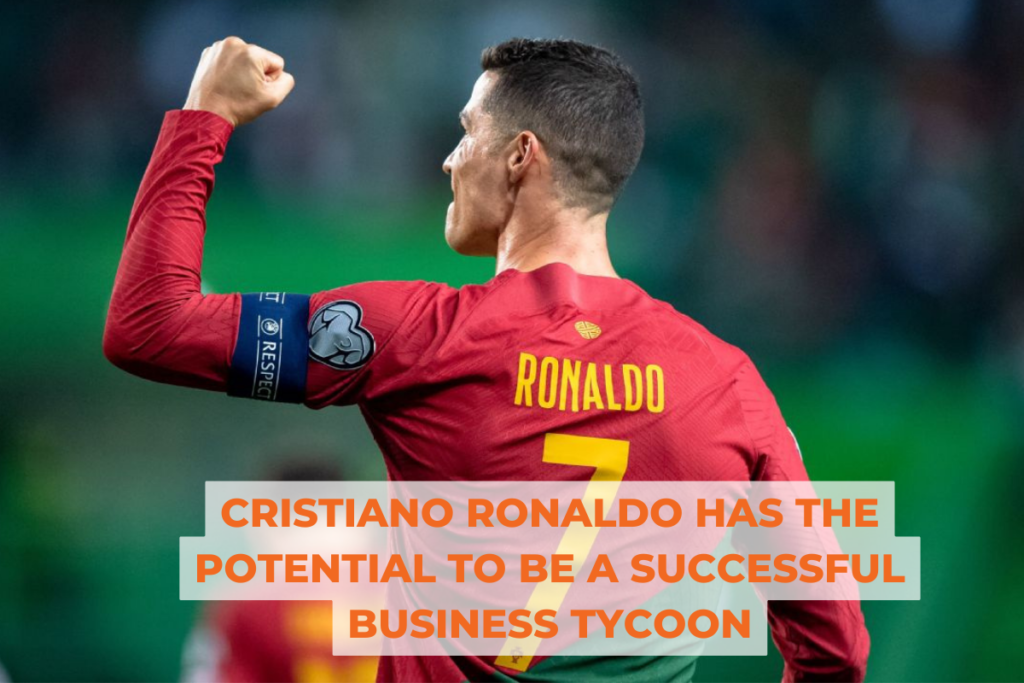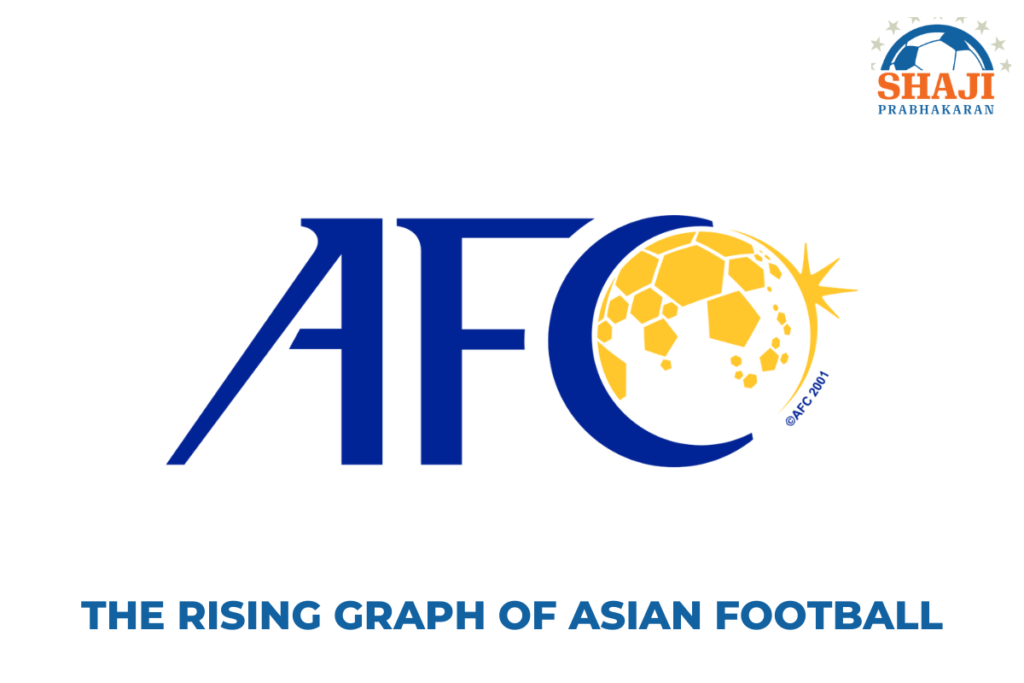India is all set to enter the history book on 6th October 2017 with the start of FIFA U17 World Cup 2017 on India’s soil for the first time not only that another very important history will be created by India U17 National Team when it meets the USA, this match would be India’s first match in any FIFA World Cups. A twin history-making day and probably, no looking back from here on for Indian football. We the proud soldiers of Indian football would pray and want the Indian team to perform best to its ability and make the nation proud. No doubt, India will be hugely successful in hosting the first-ever World Cup and the world will have the opportunity to notice India’s love affair with football. The last FIFA U17 World Cup 2015 was held in Chile and I was fortunate to be part of it from the opening day of the match at Santiago to the final match at Vina Del Mar. Where Nigeria beat Mali 2-0 in the final to lift the record 5th FIFA U17 WC. Overall, it was an overwhelmingly enriching experience for me to get the first-hand experience of organizing the World Cup and witnessing the highly talented youth footballers from the sidelines. Not to mention, spending more than a month in a football-crazy country and closely witnessing many aspects of Chilean life was the experience of a lifetime. For Chile, 2015 was a historical year, for the first time in its history, Chile’s national team won the Copa America after beating arch-rivals Argentina in the final. To win the first continental title in front of the home crowd was an extra special year for the host nation. Though Chile hosted Copa America for the 7th time, it was for the first time hosting a FIFA U17 WC. Football is an integral part of most Chileans and footballers are household names and generally, hosting U17 WC won’t create that kind of a buzz and euphoria locally when the country has high exposure and achievement amongst the football elites. This was found to be true locally, whether it was the local media or the public at large Under 17 was not the talk of the town except the time the home side was playing. Chile, the hosts organized the World Cup using eight different venues and the home side progressed to the second round by being one of the four third-best teams in their group. The host team could only register one win in four matches, a 4-1 win over the USA was its best show. The other two teams in Chile’s group were the champions Nigeria along with Croatia. The hosts after registering a 1-1 draw in its opening encounter against Croatia at Santiago suffered a humiliating 5-1 defeat at the hands of eventual champion Nigeria. In the second round, i.e. the round of 16 Mexico put up a dominating performance to knock out the home side from the U17 WC with a 4-1 scoreline. The South American hosts attracted a near-capacity crowd for their matches except for the opening encounter against Croatia in the capital city, the match was attended by approx. 21000, a little below the 50% capacity of the Estadio Nacional Julio Martinez Pradanos (stadium) in Santiago.
The most challenging part of the job in Chile was the opening match at Santiago for many reasons, the capital city was only part of two matches after the brief colorful opening ceremony on 17 October 2015. Then we shifted our base to Vina Del Mar till the final day of the 16th FIFA U17 World Cup 2015. Vina Del Mar was a fully renovated stadium for the Copa America and it was great fun to work with the local organizing committee at that venue. The Estadio Sausalito was a 22340-capacity stadium and we hosted a total of 9 matches in the beautiful venue including the final. The average attendance for the 9 matches was 14155 i.e. 63% of the capacity, which was not at all bad for a youth competition in that part of the world. The highest was 21893 for the Chile vs. Nigeria group game and the lowest attendance was 4265 for the round of 16 matches between Brazil and New Zealand; and Nigeria vs. Australia. The final match was attended by 15235 spectators.
The average capacity of the 8 stadiums was 21081, the biggest stadium was Estadio Nacional Julio Martinez Pradanos in Santiago with 48665 seats and the smallest was Estadio Fiscal de Talca with 8200 in Talca. So, the stadiums in Chile were not as big as India’s 6 venues except the one in the capital. The average attendance for the whole competition was 9279 which means 44 percent of the capacity. However, if we take out Santiago, the venue which hosted only two matches then the average is close to 50% which is not a bad attendance for a youth competition hosted on South American soil. The attendance could have been higher had Chile progressed beyond the 2nd round, the hosts crashing out with not-so-inspiring performances did spoil the party for the home crowd.
Forget all the stats, let’s talk about the quality of football displayed at the FIFA U17 World Cup in Chile. Many of these youth teams play fearless football and their technical abilities which were on display did indicate that there is a system of youth development does exist in most of these countries. Depending upon the country, there was a varied level of the individual to the team performances. These youngsters play with a ballistic pace and the energy they exhibit on the field as they are prepared to play for 180 minutes. With high match intensity and coupled with excellent technical level, these players gave an impression that some of these teams are battle-ready to take on established senior teams. After the end of the group stage, France looked the most threatening team but they couldn’t progress beyond the round of 16. The group match between Paraguay and France was one of the best matches in the U17 WC in Chile, the match ended in the favour of France 4-3. Three of the Asian sides progressed to the round of 16 but none could cross the second round. The Korean Republic topped its group where it was teamed with Brazil, England, and Guinea. Syria was the only Asian side that didn’t progress to the second round. It was expected that South American sides would dominate the World Cup since it is held in Chile but it was contrary to the expectations. The worst side in the WC was Argentina, the team couldn’t impress at all. Paraguay side showed great promise in patches but there was no consistency and the three-time champions Brazil lacked the team cohesion and organization to move beyond the quarters and the hosts simply lacked the competitive experience. The most promising side was Ecuador from the continent hosting the World Cup but fell apart in the quarterfinal against the talented semi-finalist Mexico.
I have closely worked with 11 different teams including the champions Nigeria and the hosts Chile during the World Cup. To deal with these young players and officials was an altogether different experience and their entire approach was very professional. We stayed in the same hotel as the teams and frequent interactions with the players and the team officials including the coaches were thought-provoking and inspiring. While interacting with these youth players one will know that their whole focus is to go one step better at a time and play professional football. The presence of scouts, especially from European clubs does make the competition a serious affair for these talented youths. However, many of these talented lots were already part of professional clubs and their focus was on how to break into the main team. Whether it was Belgium, Croatia, France, the USA, Germany, Mali, the Korean Republic, etc., all showed tremendous promise and there were players who stood out as a highly talented lot.
One such player whom I kept a close eye on was USA’s Christian Pulisic, he was already signed by German club Borussia Dortmund. An attacking midfielder, with the attitude of a complete pro, mentally tough, hardworking, technically sound, and a very intelligent player. He impressed me in the very first match against Nigeria and was a consistent performer in all three matches for the USA. Within the next few months after the end of the U17 World Cup 2015, he made a senior debut for Borussia Dortmund and in April 2016 he became the youngest foreign scorer in Bundesliga’s history. Thereafter, he had a few more records in his name, he also became the youngest player to score an international goal for the USA. Like Pulisic there were few more who all were of high potential to succeed at the top professional level. Victor Osimhen from Nigeria who was the record goal scorer in the FIFA U17 World Cup 2015 in Chile was a highly promising player. In January 2017, he was signed by Wolfsburg, a Bundesliga club, he was chased by many clubs from Europe, and his teammate and Golden Eaglets captain Kelechi Nwakali was a commanding figure in the midfield and it was his and Victor Osimhen’s superior performances Nigeria could clinch its 5th U17 title. Kelechi was later signed by Arsenal and he is currently out on loan to a Dutch club. Most of the participating players were part of the club youth system and there were players from Arsenal, Anderlecht, Real Madrid, Barcelona, Bayern Munich, PSG, Chelsea, Spurs, Man City, Man Utd, Everton, Santos, Flamengo, River Plate, etc., etc, clubs which only indicates these youth players are nurtured by the best in the business and that is the reason we could see high-quality football at the FIFA U17 World Cup.
The World Cup in Chile was visited by an Indian delegation comprising members from the Sports Ministry, SAI, and AIFF and then the Indian U17 Coach was also stationed in Chile for 2 weeks to witness the matches. Fortunately, I had the opportunity to meet and take the Indian delegation to the stadium tour, the final match venue. On the day of the final, for me, it was a great occasion to personally witness when the FIFA flag was handed over to the Indian delegation to host the next World Cup 2017 in India by the Chairman of FIFA U17 World Cup Organising Committee Sunil Gulati.
As we all know Chile is an active earthquake zone and during my stay, I experienced three tremors of varied intensity. The scariest one was 6.8 magnitude on the 7th of November 2015 early morning – I was on the 12th floor of the hotel and it shook so violently which made me think that everything going to collapse but nothing worse happened. Chile’s preparedness and preventive measures to deal with natural calamities were a great learning experience. There are SOPs and citizens are trained to deal with earthquake situations which in our part of the world do exist in the papers alone.
There is no location in the world where we can’t find an Indian and in Chile, there are Indians working in the IT sector and few running businesses in the capital city of Santiago. But I was surprised to meet a Mumbai wala, Sindhi in Villa Del Mar running a store where one can find different Indian materials including puja ingredients. The store owner is a big fan of Katrina Kaif, her posters were all over his store. He is settled in Chile after marrying a Chilean but he visits India every second year without fail. He took me to a Pakistani kitchen where we had Tandoori Chicken, Rotis, and curries. For a moment, I felt like I was back in India. Okay, let’s go forward to an interesting touristic topic.
If you are planning to be in Chile then don’t miss to visit Valparaiso, it is called “The Jewel of the Pacific”. It is a world heritage site and a must-see site to visit. The whole day our team spent in this beautiful historical city, hoping one place to another. The most interesting experience was riding on a funicular lift on a steeply inclined track (it is one of the world’s 100 most endangered historical treasures). No doubt, it was a unique experience. Valparaiso is a major seaport city and the uniqueness of the city is its colorful buildings. Almost in every house, on the exterior walls, one can see the beautiful artwork which made our 4 hours of walk an enjoyable and memorable experience. The visit to Valparaiso is incomplete without visiting the “La Sebastiana”, the house of the famous Chilean poet, politician, and diplomat Pablo Neruda which is converted into a museum called La Sebastiana. The entire work and life of Pablo Neruda are thoughtfully presented in the museum and it is very inspiring to go through the life story of the Noble Awardee.
There are many more aspects of Chilean life and the local culture, food, and wineries I have experienced. If I have to present every bit of it then I would need many more pages to complete it. Overall, it was worth traveling to that far part of the world from India to experience something special. I am blessed to be part of football; the beautiful game takes you to beautiful places and provides many opportunities to experience the beauty of life through football. No other sports connect the world better than football and my experience in Chile will stay for long in my memory. The diehard football fans you meet, the volunteers you work with, the youth players you see perform as accomplished artists on the field and your professional colleagues with whom you collaborate to deliver an event in an unknown country can’t be expressed in a few words, it was an experience of a lifetime. Thank you, FIFA and Chile, for the fabulous experience and it is now the time to stay focused on India. It is for the first time 1.3 billion will experience a football extravaganza of this kind and it is for the first time the world will witness how popular football is in India. Let’s pray together and work together to make football the major force in India. This is an opportunity – go for it. All the best. God bless India!



